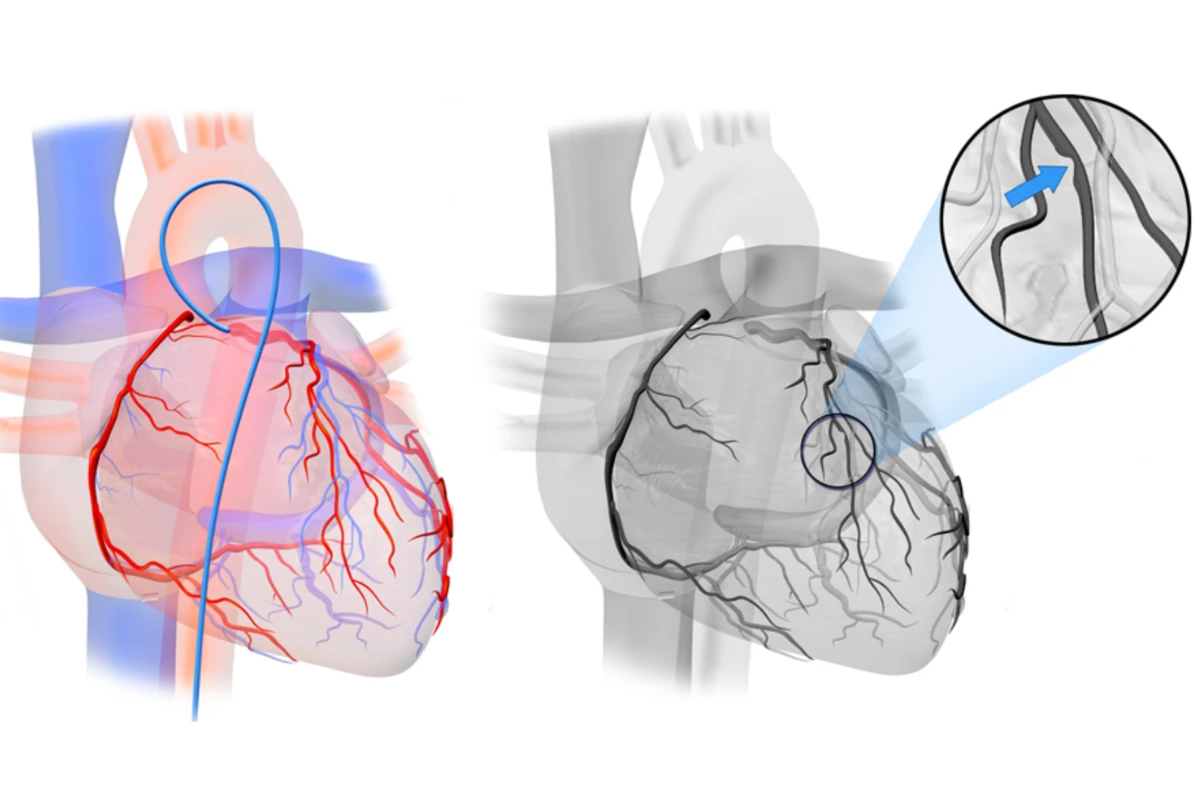A coronary angiogram is a diagnostic procedure used to visualize the coronary arteries and detect any blockages or narrowing that could affect blood flow to the heart. This procedure is commonly performed to assess the severity of coronary artery disease (CAD), which can lead to heart attacks or other heart-related issues.
What Is a Coronary Angiogram?
The coronary arteries supply blood to the heart muscle. During a coronary angiogram, a contrast agent (iodine dye) is injected into the arteries through a thin plastic tube called a catheter. The dye helps highlight any blockages in the arteries, allowing doctors to assess the extent of the narrowing and determine the best course of treatment. The procedure is also known as coronary angiography or coronary arteriography.

How Is the Procedure Performed?
The catheter is inserted into one of two main access points:
- Groin (Trans-femoral angiogram)
- Wrist (Trans-radial angiogram)
The catheter is then advanced through the blood vessels to the coronary arteries, where the contrast dye is injected. The dye shows up on X-ray, allowing the doctor to identify any blockages or narrowing in the heart’s blood vessels.
When Is a Coronary Angiogram Recommended?
A coronary angiogram is typically recommended in the following situations:
- New or unusual chest pain
- Abnormal results from non-invasive cardiac stress tests or CT angiograms
- During or after a heart attack
- Poor heart function (e.g., left ventricular dysfunction)
- Preoperative evaluation before heart surgeries (e.g., valve replacement, heart tumor removal)
- Evaluation of stents or bypass grafts post-surgery
- Preoperative workup for high-risk surgeries (e.g., vascular or aortic surgery)
Risks of a Coronary Angiogram
While generally considered a safe procedure, there are some potential risks, including:
- Allergic reactions to the contrast dye
- Kidney damage from the dye
- Infection or bleeding at the insertion site
- Blood clot formation, potentially leading to a heart attack or stroke
- Irregular heart rhythms (arrhythmias)
- Rare cases of artery leakage, leading to a pseudoaneurysm
Preparing for a Coronary Angiogram
Before the Procedure:
- Fasting: Avoid heavy meals 8 hours before the procedure, light meals 6 hours prior, and no fluids 2 hours before.
- Hydration: Proper hydration is essential to minimize the risk of kidney damage from the contrast dye.
- Medical preparation: Inform your doctor about any current medications, allergies, or supplements you are taking. Baseline tests such as ECG, echocardiogram, and kidney function tests are required.
- Arrange for someone to accompany you to and from the procedure.
During the Procedure:
- The procedure is performed in a sterile environment to reduce infection risks.
- The catheter is inserted through a small incision at the groin or wrist, and guided to the heart under X-ray guidance.
- Contrast dye is injected to visualize the coronary arteries and identify blockages.
- The doctor will assess the number and location of blockages, as well as the characteristics of any lesions.
After the Procedure
Immediate Care:
- Your vital signs (blood pressure, heart rate, temperature, etc.) will be monitored.
- You will need to rest for 6 to 8 hours after the procedure. If the catheter was inserted through the groin, avoid bending or crossing your legs for 12 hours.
- Adequate hydration is crucial to help flush the contrast dye from your system and protect your kidneys.
- The site of the catheter insertion will be checked for signs of infection or bleeding.
Follow-up Care:
- Blood tests and ECG may be repeated during follow-up visits to monitor your recovery.
- You will be advised to avoid strenuous activities for a few days and follow your doctor’s instructions for aftercare.
Conclusion
A coronary angiogram is a key tool in diagnosing and assessing coronary artery disease. It provides valuable insights into the condition of your heart’s arteries, helping doctors plan appropriate treatments such as angioplasty or surgery. While the procedure is generally safe, it’s important to follow pre- and post-procedure instructions to ensure a smooth recovery.
